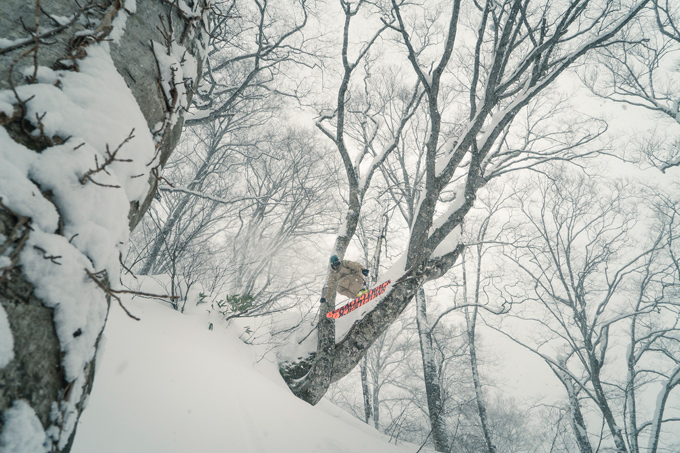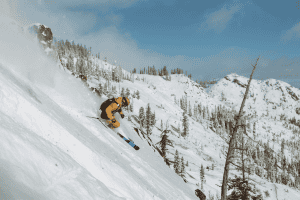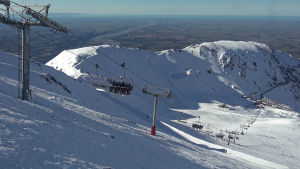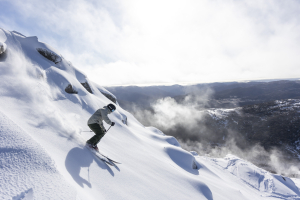Ultimate Guide to Spring Skiing in Nagano & Niigata
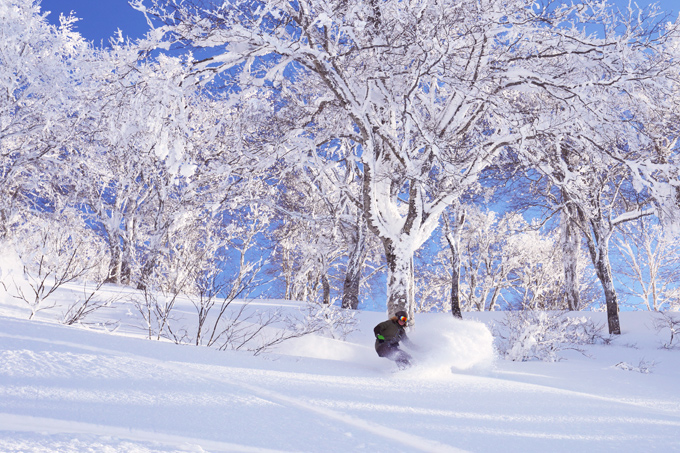
Article provided by Nagano Tourism department
Powder Snow meets with the Corn Snow of Spring
When it comes to skiing in Nagano and Niigata look no further than Hakuba, Nozawa, Shiga Kogen, or Myoko Kogen. These resorts attract large numbers of skiers from around the world mainly travelling through January and February. However, un-be known to most March can double as an equally spectacular time to travel combining the powder snow of the winter with more sunny days and great spring corn snow.
Japan’s heavy snowfall means there is plenty of snow even in the spring and with a warmer climate it creates a more pleasurable environment for skiing rather than in harsher winter months. From spring to early summer is the best time for backcountry skiing and Japanese skiers can enter the depths of the mountains that were previously closed off.
Spring skiing offers a host of other highlights unavailable during winter months such as the start of heli-skiing in Tsugaike resort of Hakuba, which is unsuitable due to the stronger winds of winter.
In this special feature, one of our reporters shares their experience travelling to three areas where you can enjoy the pleasures of spring skiing.
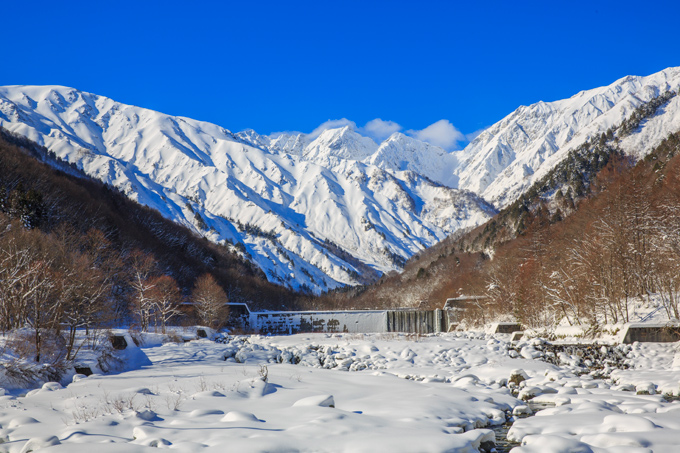
Hakuba
Spring Skiing offers Heli-skiing on the Grand Slopes of Mt. Norikura
The village of Hakuba is located in the northernmost reach of the Japanese Alps, it offers breathtaking views and natural scenery that have earned the village the title of the best in the country. The name Hakuba itself derives from the characters ‘white’ and ‘horse’ in Japanese and stories surrounding its origins abound. Some say it comes from the beautiful white lines of the peaks that look like a white horse, while others say it comes from the patterns of the rocks and snow. Whatever the origin, the white lines of the mountains give you a sense for just how perfectly fitting the name ‘Hakuba’ is.
Hakuba has a multitude of ski areas in the region. Advanced courses are in abundance here, the largest being the Happoone Resort that draws advanced skiers from across Japan, Goryu Ski Resort and Hakuba47 offer tree runs, non-compacted snow courses and parks and finally the Iwatake Snow Resort offers a full 360 degree view out over the northern alps and the basin between the peaks of Hakuba itself.
However, the area featured this time is the Tsugaike Kogen ski area, which is more of a beginner-friendly resort and a hit with families. Tsugaike Kogen is also home to heli- skiing, an adventure that is only available in spring. Annually, heli-skiing starts around March 10th and is a popular service limited to only 400 people per day.
Heli-skiing is best enjoyed in the early morning when the snow is set just right. If you head out via the gondola to the middle of the ski area you will find a booth where you can sign up for a flight. Climb aboard and let the helicopter transport you up into automatic 360 degrees views over the Alps. While the ride itself is short, it is a thrilling experience as the g-force pushes you back into your seat while the helicopter cuts a steady arc through the air.
While you can ski more than 14km from the landing site at the top back down to the foothills, a hike further up to the summit offers a greater experience.
The view from the peaks offers a breathtaking sight over the peaks of the mountains and away in the distance, the Sea of Japan. Down below lie wide snowy slopes as far as the eye can see, making this a truly amazing course that only those who make the trip to the very peak can enjoy.
Even in spring the snow is still very light and skiing over corn snow with its feather light coating of ice is an unusual experience that can only be enjoyed at this time of year. Near the bottom of the slopes rest the buildings of the ski area and when you arrive out of the forest to the base of the lifts and continue on down from there, brings the course down from the peak to a total of 17km! When you get back from the slopes settle down under the warm sun on the terrace for a beer, another one of spring times pleasures.
For those who have only visited Hakuba in the winter, it is highly recommended you make a trip in the spring as well.
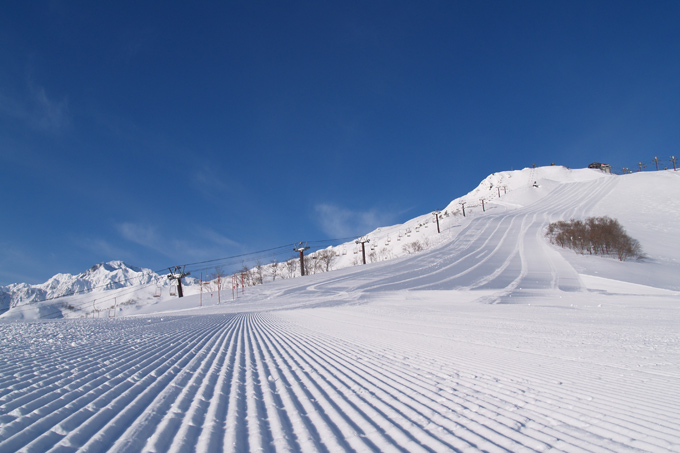
Enjoy a Walk around Hakuba amongst a plethora of New Shops
Many new and interesting stores have opened up in the Hakuba area in the past few years. Close to the bus terminal in the main hub of the village, stores are dedicated to snow-related brands such as Patagonia and The North Face and are also complete with a cafe that is popular among the many Aussies who visit in the afternoons. The Australian ski shop Rhythm Snow Sports can also be found here and is also home to the company Evergreen that holds backcountry ski tours and offers the appropriate equipment for hire. Another hot spot is the recently opened brewery in the Iwatake area that bustles with patrons in the evenings, don’t forget try the original Hakuba beer while you’re there. From skiing to the township at its foothills Hakuba continues to grow and evolve and no doubt draws outdoor enthusiasts form around the world.
Shiga Kogen
The Largest and Highest-Elevation ski fields in the Country
There is a period known as Golden Week in Japan, a time of year in early May where several public holidays are grouped together and usher the country into an extended holiday period. At this time many skiers and snowboarders head for Shiga Kogen in search of their last chance to enjoy the ski season. Early May heralds the end of spring and the start of summer and may seem like an odd time for skiing but the overall elevation of Shiga Kogen is characterized by two peaks, Yokoteyama and Shibutouge offering the highest elevation of any ski area in Japan with standard lifts and snow even in warmer months.
Shiga Kogen is a combined body of 19 previously separate ski areas and the largest ski resort in Japan with 52 lifts and gondolas that you can access via a single lift pass. Skis cannot reach some areas but there is a shuttle bus that connects all areas that allow you to enjoy its full range.
Needless to say, taking full advantage of such a wide range of ski area demands its fair time investment. The mountains here are deep and with the majority of ski areas reaching an average elevation of over 1,500m, the weather is often quite unpredictable and cold in the winter. The option of a spring visit is therefore more appealing with its warmer and more stable climate.
A 40-minute trip from the foothills of the mountains up to Shiga Kogen brings you in contact with the Maruike, Sun Valley, and Hasuike ski areas. From here to Okushiga Kogen at the very heart of Shiga Kogen, you can travel through the 15 ski areas via the slopes themselves. Sun Valley and Hasuike are comparatively easy courses, but the giant ski area that continues on from there is a challenge even for experienced skiers and is known as a famous barn. Ichinose and Takamagahara offer steep slopes for the more experienced skier at the top and comparatively easier slopes near the bottom, offering a layout that is incredibly well balanced.
Of the ski areas in Shiga Kogen, Terakoya in particular boasts a reputation for excellent powder and frost can still be found in the trees even amidst the soft sunlight of spring. Arriving at Terakoya in the midst of this beautiful scenery you are greeted by wonderful conditions out on the slopes where skiers and snowboarders hit well-packed snow. This is what skiing in spring is all about! The foothills of Terakoya offer a terrace where you can sit back and enjoy a meal and the outdoors.
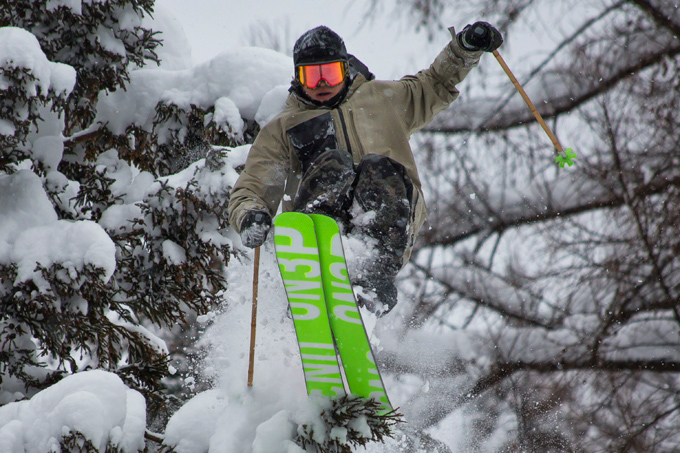
The Higashitateyama Ski Area is another popular spot that boasts the longest runs of all the ski areas in Shiga Kogen and a variety of courses ranging from gentle, to steeper and to mogul slopes. This is one spot you can’t afford to miss!
At the farthest reach from the central area is the Okushiga Kogen ski area, known for its good springtime conditions. While you pass through several courses along the way, each offers its own attraction and the trip itself makes for an exciting one with a variety of courses on offer. Here in the sun, each slope you hit is different and good. The kid’s area is complete with a conveyer belt and is popular with families, as are the sleds at the separate ski area at the foothills of Mount Yakebitai, the look of happiness on the children’s faces is a reminder of Shiga Kogen’s family-friendly side.
From there, it is straight on to the Okushiga Kogen ski area. Even though this area is part of the greater Shiga Kogen area itself, the change in atmosphere is immediate. With superb powder snow the likes of the Terakoya ski area boasts a large open space of its own with very few visitors. One of its key attractions is one of Shiga Kogen’s most eminent long courses. It’s enough to make you understand why the Okushiga Kogen area is a familiar name to those who seek spring skiing.
The Okushiga Kogen Hotel at the foothills of the ski fields is a highly refined western-style accommodation, its mascot is a St. Bernard that is loved by all who come to visit. The hotel also offers the opportunity for outdoor BBQs and walks on snowshoes, making this a popular option.
Shiga Kogen is also home to the famous Sugiyama Ski & Snow sports School, which incorporates methods from the home of skiing itself – Austria. All you need do to is take a lesson and make your presence known.
Shiga Kogen’s Spring Beer Festival
One event that is a huge hit with skiers from abroad who visit in March is the Snow Monkey Beer Festival that offers more than 100 different types of craft beer and live music performances. It was held in mid-March this year and is quickly gaining popularity as an annual fixture for the region.This event offers music and craft beer from both Shiga Kogen and from across the country, it is highly recommended when you visit here in spring.
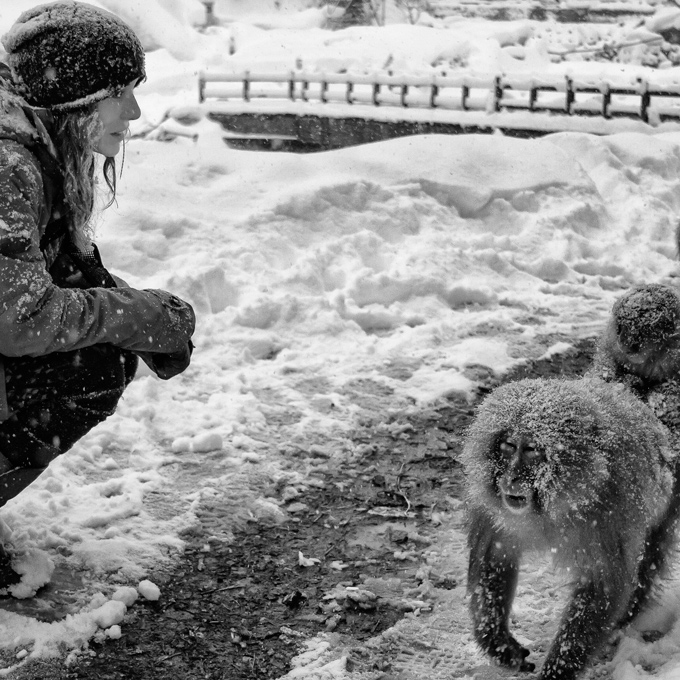
Nozawa Onsen
A blend of a historic hot spring village and side country skiing out in the wild.
Nozawa Onsen is a destination so popular with Australians and other overseas skiers that the bars and restaurants in the village are filled during peak season. The reason for its popularity is none other than its combination of ski areas and natural hot springs.
Not only does Nozawa Onsen boast expansive ski areas, the village that lies at the foothills offers incredible convenience with great stores, all set among the atmosphere of a traditional Japanese village. The hot spring waters of Nozawa Onsen are known for their quality and can be found throughout the town where you will see people walking in their traditional Japanese yukata, giving it a hint of sophistication.
Despite being a popular area, travellers from abroad disappear in March, another sign that spring skiing has yet to gain in popularity. The Nozawa Onsen ski area is an expansive one that feels like a mountain in itself with an average elevation exceeding 1,000m and can be reached by taking a long gondola ride from the foothills.
From the peaks of the mountains, the Yamabiko area breaks out into three main courses. In between those courses, however, is a side country area that skiers can enter at their own risk. In Japan, entering side country areas such as these is generally prohibited out of concern for safety, but some ski areas have recently begun to open up these areas in response to demand. Most tend not to stray too deep, but the side country areas that you can enter here at the Yamabiko area are popular and allow skiers to enjoy tree runs in powder snow similar to riding in the backcountry. That course, however, changes completely with the spring.
Nozawa Onsen is an area known for its heavy snowfall, so it comes as no surprise that there is heavy snowfall even in the spring, and the high elevation of the Yamabiko area allows the groomers to retain a consistency that is perfect for carving while the side country areas are covered in corn snow which is typical for springtime. The amount of snow does gradually decrease in comparison to the harsher winter months, however, as the days grow warmer nature begins to unveil the natural formation of the surrounding wilderness.
The Yamabiko area is normally well known for its natural half pipes and kickers that make for an exciting course, but the receding snow uncovers the wilds beneath bringing an added layer of strategy to the slopes. Gliding down the slopes across this ever-changing terrain amidst the warm weather, the rustling sound of the wind through the trees greets you as you come to rest. It is here, during this wonderful oneness with nature, that Nozawa Onsen shines.
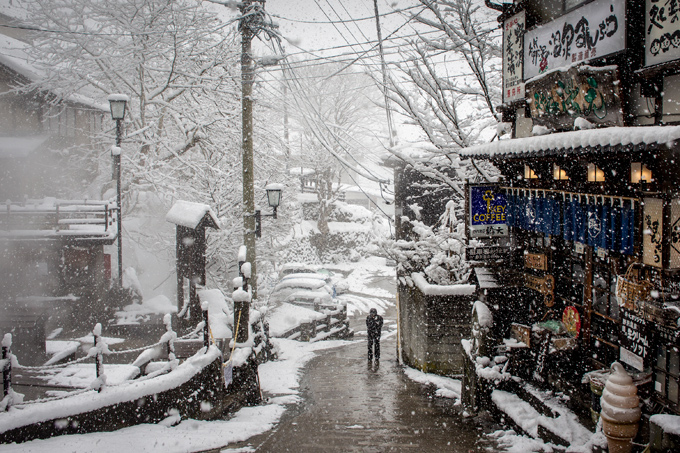
A Hot Spring Village with a Myriad of Attractions?
The village of Nozawa itself is beginning to evolve as new stores open to meet the boom in popularity among overseas skiers. One example is a new brewery that has opened up in front of the large outdoor bath that is one of the symbols of this hot spring village. Another gift shop in the center of the town has turned into a cafe that uses coffee beans and equipment popular in New Zealand and Australia to serve authentic espresso coffee. The jumble of eastern and western cultures in the midst of an old hot spring village is one of the reasons that gives the area its charm and is sure to secure its place as a hotspot in the springtime for those that come to learn of its appeal.
Last but not least, Nozawa Onsen is a place from which many national skiing representatives have been born, some of which have gone on to become former world champions and Olympic competitors. The chance of running into skiers of such renown amidst the town is yet another attraction that only Nozawa Onsen can afford.
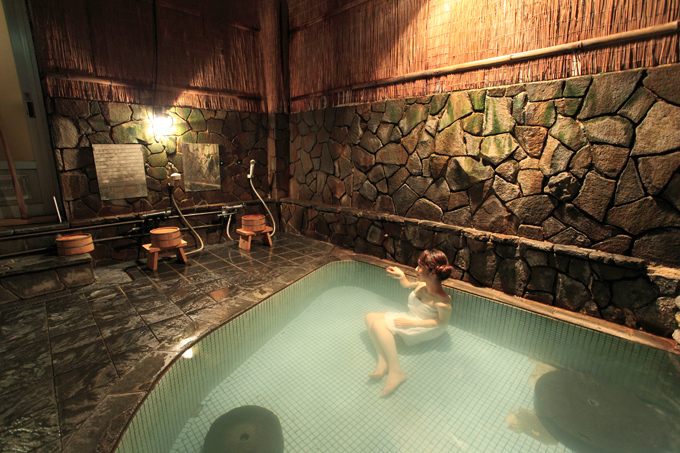
Myoko Kogen
Backcountry Skiing in one of Japan’s Snowiest Regions.
Just over the border from Nagano neighboring the Niigata Prefecture is Myoko Kogen, a ski area known for its heavy snowfall. This area comprises of three main ski areas and has seen a large boom in visitors from overseas in recent years. There is the Suginohara ski area that offers a change in elevation of over 1,100m and a ski route up to 8,500m in length, the Akakura area comprises of the Akakura Kanko Resort Ski Area and the Akakura Onsen Ski Area set amidst the backdrop of a hot spring town, and the Ikenotaira Hot Spring Ski Area that has seen a recent boom in park facilities and is popular to snowboarders that can be found in between.
Another area seeing a boost in popularity spread through word-of-mouth from overseas skiers who have visited recently is the Seki Onsen Ski Area. The course itself is extremely small, but enjoys great popularity due to its easy access to backcountry skiing areas.
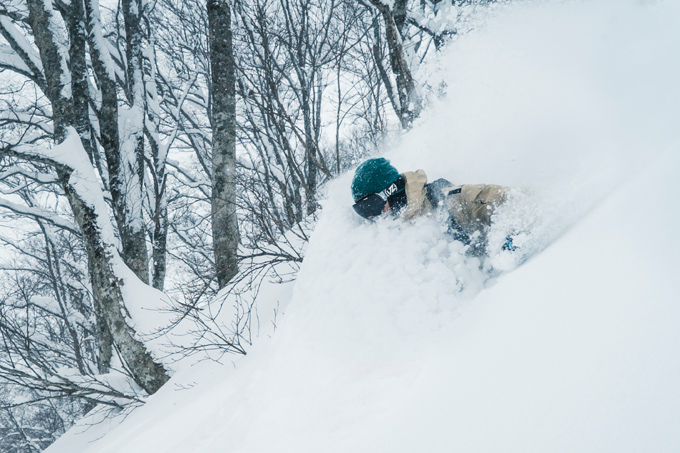
Two areas for those seeking to enjoy spring skiing are the Akakura area and the Ikenotaira Hot Spring Ski Area. Here, see the longstanding Akakura Kanko Hotel on the ski fields of the Akakura Kanko Resort Ski Area, which has recently been refurbished and affords amazing views out over the surrounding countryside.
The Akakura Kanko Hotel itself offers a refined, elegant atmosphere befitting its reputation, and its facilities, most notably the newly established Aqua Terrace. Some rooms come complete with an outdoor hot spring bath, and the layout of the rooms offer a view overlooking the ski fields. Your choice in dining ranges from French to Japanese cuisine, bakeries and more. The spa facilities are a hit with female guests there’s no better option for a stay in Akakura. The hot spring town of the Akakura area with its long line of shops is also a worthy attraction, the only place in Myoko where you can hop from one store to the next after your ski adventures.
Next is the Ikenotaira Hot Spring Ski Area where you can enjoy tree runs in an area that was previously prohibited but opened up due to popular demand. Heading out onto the course, the tree line in the middle of the slopes is open and offers a satisfying change of pace as you ski through the trees on powder snow and on the right decline.
The Ikenotaira Hot Spring Ski Area also offers easy access to backcountry areas. Heading to the peaks by lifts and trekking further out allows you to enjoy amazing backcountry skiing. The backcountry of the Myoko area is comparatively low in risk, and highly recommended. The backcountry areas here are not only safe, they also offer countless amazing runs. The Dancing Snow tour company offers backcountry ski tours and is run by an American expatriate and is very well known in the community, check them out if you’re interested in a backcountry adventure.
Of the areas in Myoko, Akakura is known for being a hot spring town, the township’s history allows you to enjoy delicious traditional countryside cuisine. No matter where you go, you are met with the simple yet inspiring heritage of Japanese cuisine. One recommendation is Matagi at the foothills of the Ikenotaira ski area. While speaking English is not their forte, popular dishes such as ramen is on offer and a must for any visitor, offering the understated tastes of traditional Japanese cuisine.
Click through for spring skiing deals on to Myoko Kogen, Hakuba, Shiga Kogen and Nozawa Onsen
